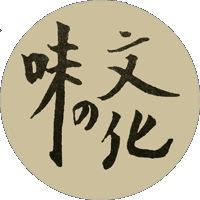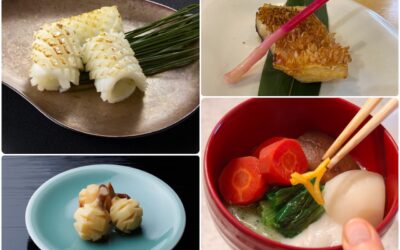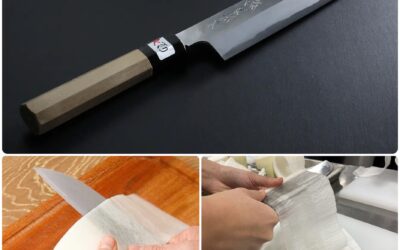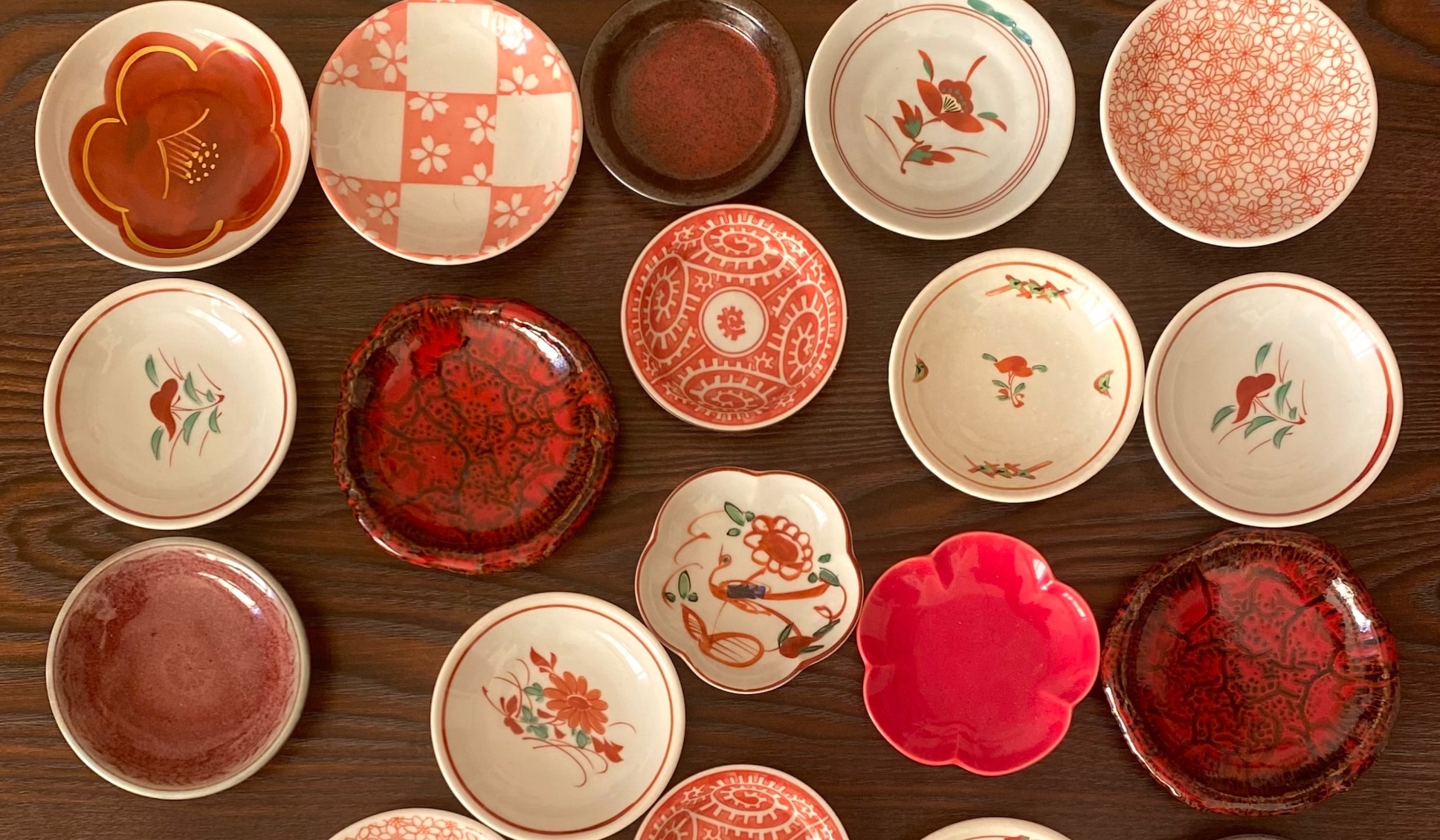
MAMÉ-ZARA Fun
Collecting and Using Small Plates
Part of the fun of collecting dishes and other tabletop accessories, is to assemble wide-ranging variations within a category. With mamé-zara, one way to do this is focus on a color scheme such as red and then collect as many different shapes and designs as possible.
Another might be to choose a subject like Mt Fuji … or the auspicious kotobuki calligraphy 寿
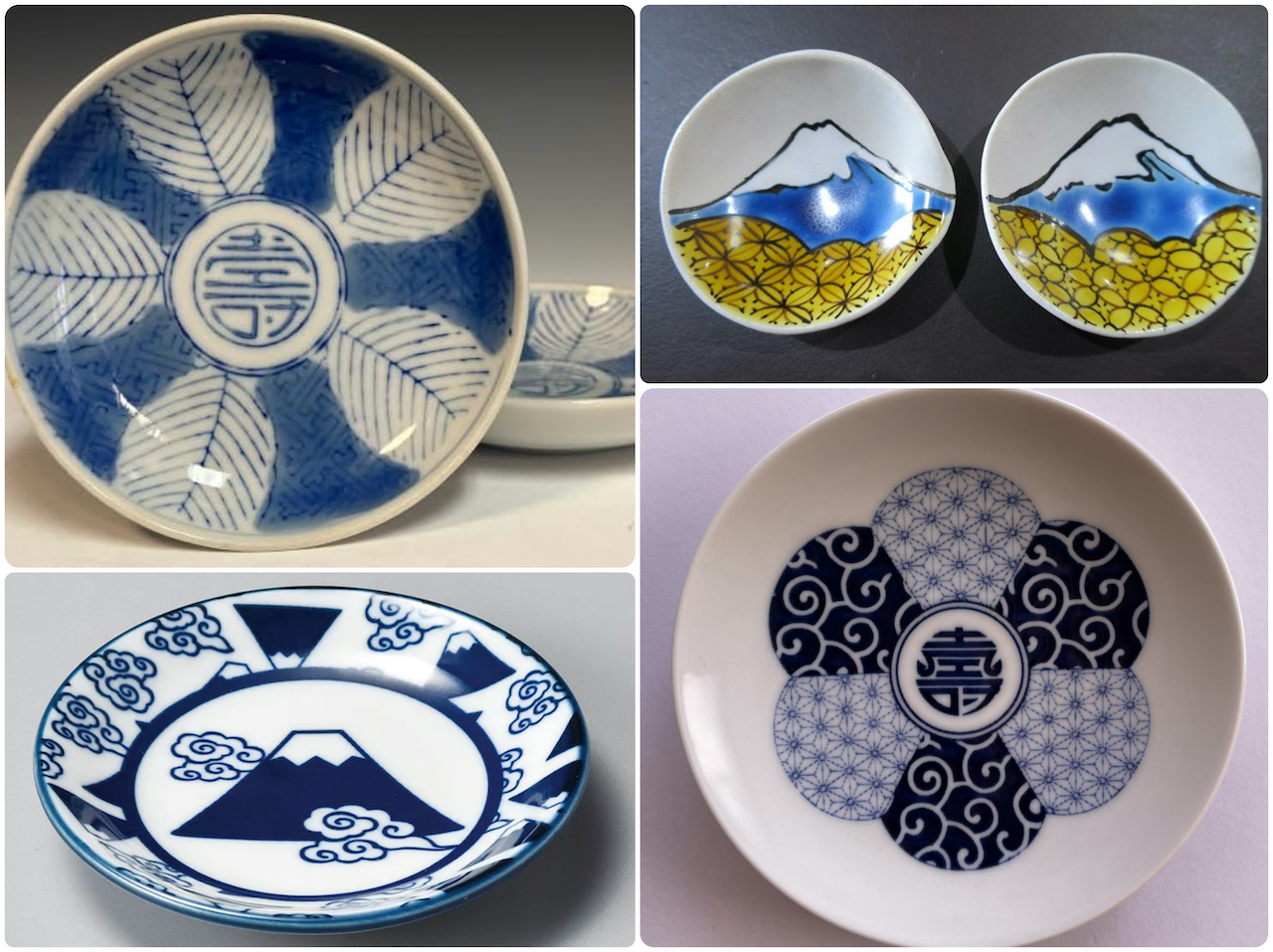
No matter what color, shape or theme you choose for organizing your mamé-zara, small plates are a great way to serve tasty tidbits, whether they are freshly made for that meal, or leftovers from a previous one.
To get you started, here are a few recipes for small bites that pair well with beer or sake or tea.
SHISO MAKI しそ巻き hails from Japan’s Tohoku region known for its walnuts and full-bodied red miso. This dish showcases both in an addictively tasty filling for herbaceous shiso leaves. Some Tohoku chefs will add a spicy spark to the sweet-and-salty miso mixture by adding a pinch of fiery shichimi tōgarashi to the filling.
and
HŌRAI-ZUMÉ 宝来詰め plump, juicy Treasure Filled (stuffed with chicken) Mushrooms, that are skillet-seared and soy-glazed.
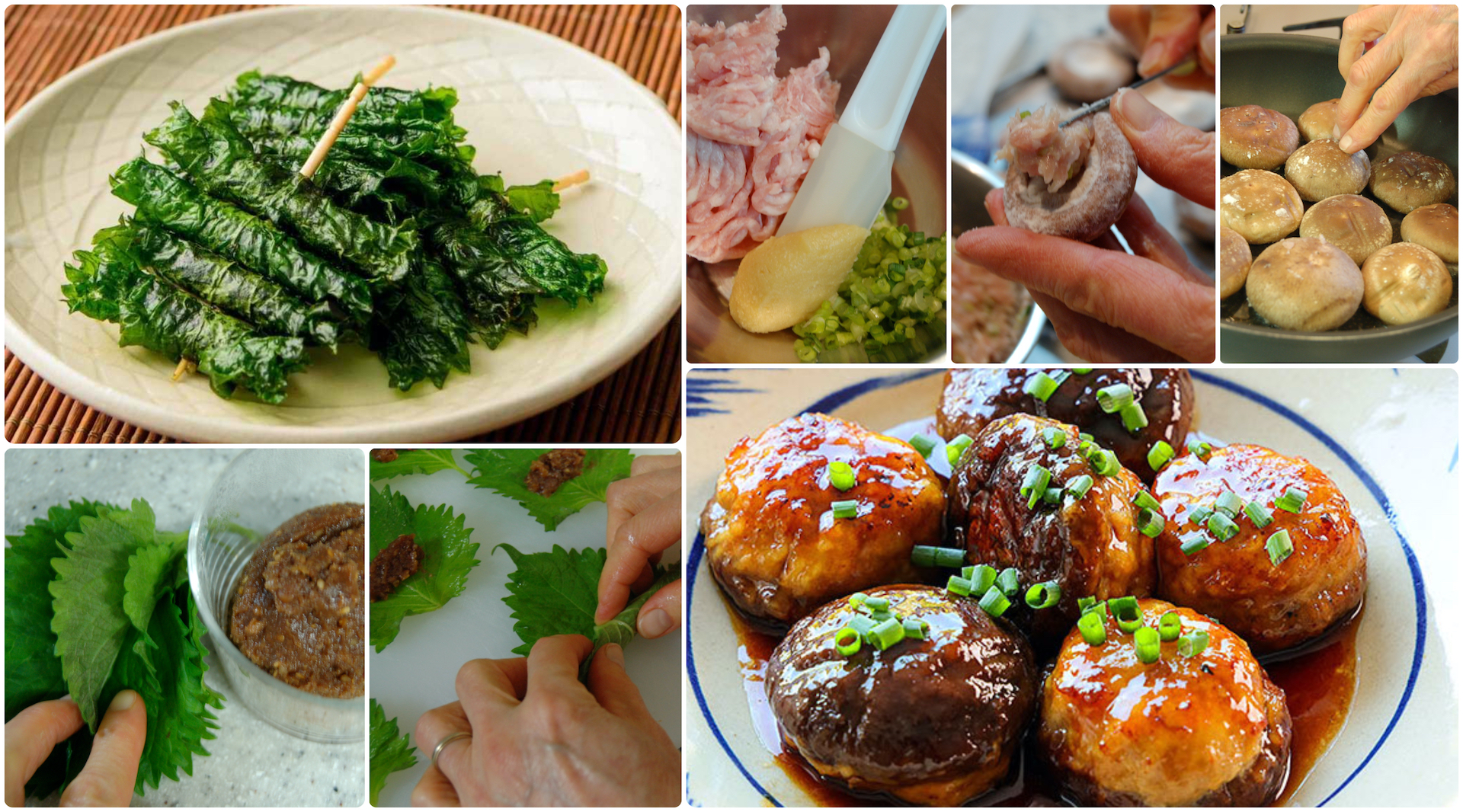
Visit the companion blog post, Small Plates.
